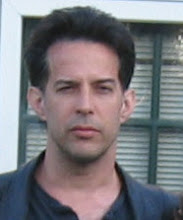I have really been bogged down with my day gig spilling into my evening guitar hours. However, although I did not have time to work on composing I did manage to experiment with the use of a soft sampler and sound fonts. The soft sampler I use I have mentioned before. Its SFZ which is free but excellent so far. What was a pleasant surprise was the performance I am getting out of SFZ and the use of SoundFonts. Now, for those that don’t know, SoundFonts come in all shape and sizes. Some are huge. Like RealFont which is a free, good but large GM sound font. Its large because its high quality but also because its a GM font which means it provides for the entire GM (General Midi) instrument set which is large. Everything from pianos to helicopter sounds. SoundFonts can be small , of high quality but specific to a certain sound or instrument. For example, one commercial sound font I’m checking out is based on the vintage Yamaha DX-7 saw wave. Since in this case the sound font is about a specific sound it can still be of very high quality yet significantly smaller than using a GM sound font. The size is important because the size impacts the memory of your system. In other words the smaller the sound font the less chance you get into a memory hungry situation which means that your DAW (Digital Audio Workstation) has the space it needs to operate best. The key is to avoid latency. Latency a fancy word for a disconnect between when your fingers play a note to the point when your ears hear the note.
I was very happy with the performance. I could not hear any discernible latency at all. Soft samplers have an edge over soft synths. They just have to compute much less. After all the sound is already made, it just needs to be mapped to a note range. Synthesisers have to generate i.e. “synthesize” the sound and this takes horse power. The other benefit to the use of the soft sampler and sound fonts is the flexibility of choosing different sounds. There are tons of free sound fonts out there. Many are very good. There is also a good selection of commercial sound fonts and they are not really expensive. I have seen prices in the low teens for certain sounds. The way I see it twenty bucks is well spent if that buys me a killer lead saw sound.
The other note is how pleased I also am with my Godin LGX-SA. Specifically, the capability of driving multiple sounds from the guitar i.e. acoustic pickup, electric humbuckers and of course the synth access. Unless, I’m trying to do some special effects , the guitar synth to me means the combined guitar natural tones with the synth tones. As a matter of fact, in many ways I see the synth as an effect on the guitar. For example , one combination could the use of the natural more staccato acoustic lines of a guitar and that of a legato string synth line which is by the nature of the string patch a “delayed” sound. The synth is providing the delayed effect but instead of delaying the guitar signal you get a delayed synth which tracks the pitches of the guitar line.
The possibilities are endless and the tracking is there.
I did run into a snag getting the soft sampler’s output to Audition but I’ll talk about that on a later post.
Feedback for this post can be left on my forum.





No comments:
Post a Comment